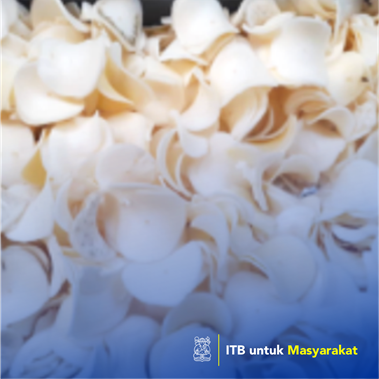

Khalilan Lambangsari
In its utilization as food, one of the deficiency of cassava tubers is The water content is quite high so it is vulnerable to decay. To get around this, cassava is often dried to reduce the water content up to about 10-15% and processed into food that has more save period Height, along with the development of the food industry, cassava flour began to be widely used by the world as a substitute for flour. Although cassava flour does not contain gluten, its use cannot replace flour as a whole because cassava flour has a very low protein content and very high starch (starch). Modified Cassava Flour (mocaf) is a derivative product of cassava flour that has gone through the fermentation process with the help of lactate acid bacteria (bal). The fermentation process can increase the womb of proteins and reduce the contents of starch in mocaf, making mocaf more soluble in water, and reduce the scent of cassava, resulting in flour with a more neutral aroma. This mocaf flour can be used to make food everyday and sell to meet the needs of the raw materials for local and national food industries. Mocaf flour has a higher selling value of cassava or crackers, so that mocaf flour products from Cireundeu village can improve the welfare of the Cireundeu village indigenous peoples. The aim of this community service program is to help cooperative women's bonds to improve production effectiveness and help reduce production costs.
Application of Writing, Implementation of Social Concern Activities in the form of education / counseling / mentoring
Cassava bulbs (manihot esculenta cranz) is one of the most used food crops as staple food Or the raw material for the food industry. Based on data from Food Outlook released FAO (2018), cassava production in the world continues to increase from 250 million tons to 277 million tons per year in the period 2010-2019. In Indonesia, cassava tubers have a very important role in national food security, both as staple food, carbohydrate sources, processed food raw materials, and also as animal feed. One of the factors that make cassava a lot of popularity is durability Plants and productivity of the tubers. Based on food productivity data Released by the Ministry of Agriculture of the Republic of Indonesia, the productivity of cassava in 2017 reached 24.6 tons / ha, greater than other basic food crops such as rice (5.1 tons / ha) and corn (5.2 tons / ha). In its utilization as food, one of the deficiency of cassava tubers is The water content is quite high so it is vulnerable to decay.